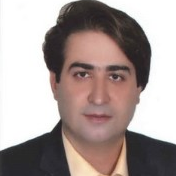Nanofluids Heat Transfer II
A special issue of Energies (ISSN 1996-1073). This special issue belongs to the section "J1: Heat and Mass Transfer".
Deadline for manuscript submissions: 5 June 2024 | Viewed by 2604
Special Issue Editors
Interests: Lattice Boltzmann modeling; heat transfer; thermodynamics; indoor air quality; airborne contamination; HVAC systems; radiation; UV; health; healthcare technological systems; Hospital environment; heat pumps; Energy savings
Special Issues, Collections and Topics in MDPI journals
Interests: heat transfer; thermal fluid dynamics; nanofluids—thermophysical properties; Newtonian and non-Newtonian nanofluids; lattice Boltzmann methods
Special Issues, Collections and Topics in MDPI journals
Special Issue Information
Dear Colleagues,
Nanofluid technologies have been identified as a solution to the problem of the rapid escalation of the heat dissipation rate, which has been observed in a wide range of applications in recent decades, for example, due to the micro- and nanominiaturization of computer electronic components, not least in medical devices, in addition to potentially addressing the requests for energy conservation.
In general, the suspension of nanometric particles in base fluids improves the efficiency of heat transfer. However, there is discussion about the experimental results for the transport properties or for the convective behavior of the nanofluids. The complete understanding of all physical mechanisms related to the behavior of these fluids, and of their overlap, is still an open issue.
In order to understand how effects related to the nanoscale could influence the macroscopic transport behavior of nanofluids, researchers are studying the stability of these solutions, including the thermal and rheological properties, convective heat transfer, and hydrodynamic behaviors of a large variety of nanoparticles (in the case of one type of particle or hybrid nanofluids) in different base fluids.
A great deal of effort is being devoted to theoretical and numerical models of the interaction mechanisms and of different physical contributions (thermophoretic diffusion, Brownian motion, effects of the wall region, effects of size and shape, etc.), and currently, several coexisting approaches are used to describe nanofluids (for example, phase and two-phase models). Multiscale approaches have attempted to fully describe the complexity of nanofluids.
We therefore invite papers on the theoretical, experimental, and numerical results of the thermal behavior of nanofluids, review papers, and papers of analysis, discussion, and assessment.
Topics of interest for publication include, but are not limited to:
- Thermophysical properties;
- Natural, mixed, forced convection in nanofluids;
- Conductive, convective, radiative heat transfer;
- Rheological characteristics of nanofluids;
- Hybrid nanofluids;
- Thermohydraulics of nanofluids;
- Heat transfer by nanofluids through porous media and microchannels;
- Convection heat transfer inside cavities filled with nanofluids;
- Fouling and clustering of nanoparticles;
- Shape effects;
- Magnetic field effects;
- Micro-, meso-, and macro-scale modeling approaches;
- Lattice Boltzmann methods.
Dr. Annunziata D'Orazio
Dr. Arash Karimipour
Guest Editors
Manuscript Submission Information
Manuscripts should be submitted online at www.mdpi.com by registering and logging in to this website. Once you are registered, click here to go to the submission form. Manuscripts can be submitted until the deadline. All submissions that pass pre-check are peer-reviewed. Accepted papers will be published continuously in the journal (as soon as accepted) and will be listed together on the special issue website. Research articles, review articles as well as short communications are invited. For planned papers, a title and short abstract (about 100 words) can be sent to the Editorial Office for announcement on this website.
Submitted manuscripts should not have been published previously, nor be under consideration for publication elsewhere (except conference proceedings papers). All manuscripts are thoroughly refereed through a single-blind peer-review process. A guide for authors and other relevant information for submission of manuscripts is available on the Instructions for Authors page. Energies is an international peer-reviewed open access semimonthly journal published by MDPI.
Please visit the Instructions for Authors page before submitting a manuscript. The Article Processing Charge (APC) for publication in this open access journal is 2600 CHF (Swiss Francs). Submitted papers should be well formatted and use good English. Authors may use MDPI's English editing service prior to publication or during author revisions.
Keywords
- thermophysical properties
- natural, mixed, forced convection in nanofluids
- conductive, convective, radiative heat transfer
- rheological characteristics of nanofluids
- hybrid nanofluids
- thermohydraulics of nanofluids
- heat transfer by nanofluids through porous media and microchannels
- convection heat transfer inside cavities filled with nanofluids
- fouling and clustering of nanoparticles
- shape effects
- magnetic field effects
- micro-, meso-, and macro-scale modeling approaches
- lattice Boltzmann methods






